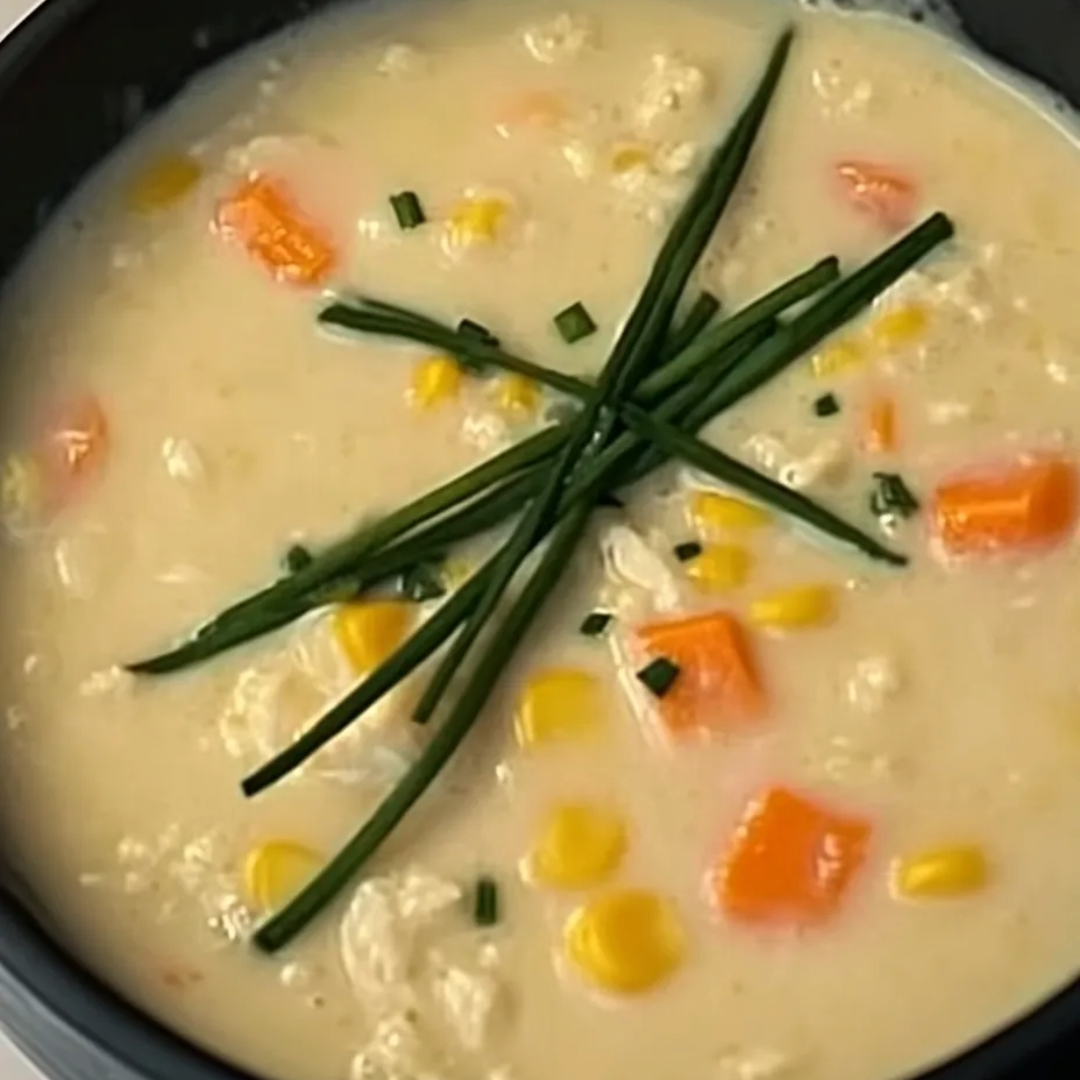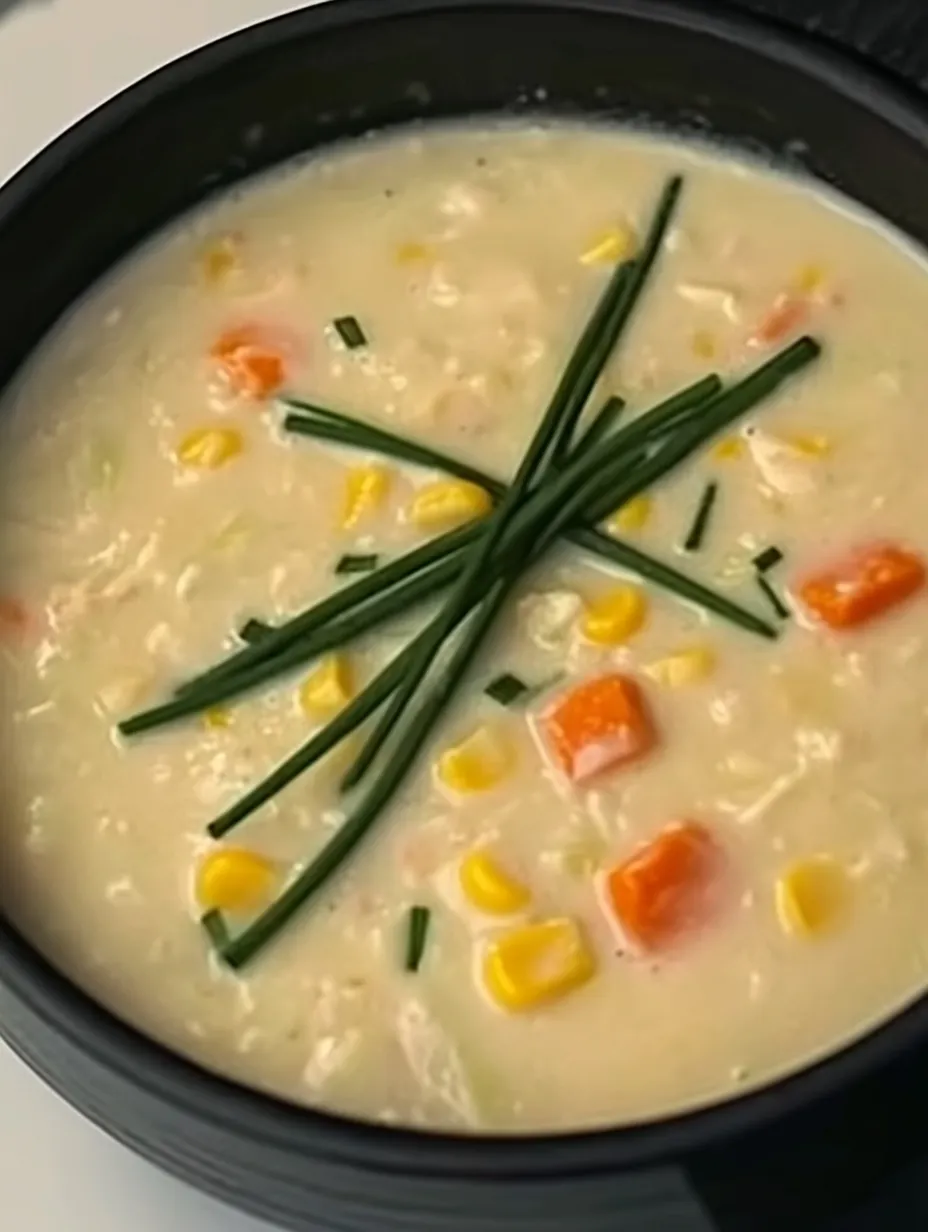 Pin it
Pin it
Crab and corn chowder brings together the sweetness of fresh corn with delicate crabmeat in a rich, velvety broth that satisfies the deepest comfort food cravings. This hearty soup shines brightest during winter months when its warmth provides the perfect antidote to chilly weather, though its incredible flavor makes it a welcome meal year-round. The combination creates an explosion of flavors – sweet, savory, and slightly briny – that transforms simple ingredients into something truly special without requiring complicated techniques or hard-to-find components.
I've made this chowder countless times during cold winter evenings when nothing else seems to satisfy. My family initially thought seafood soups would be too fussy for regular meals, but this recipe quickly became our go-to comfort food that somehow feels both special and accessible at the same time.
Ingredients and Selection Tips
- White Crabmeat: Look for refrigerated lump crabmeat for the best texture and flavor; canned works perfectly well for everyday meals and provides excellent convenience
- Sweet Corn: Fresh corn cut from the cob offers the sweetest flavor during summer months, but frozen corn kernels work wonderfully year-round and save considerable prep time
- Yellow Onion: Choose firm onions with tight, papery skin for the most flavor; they create the aromatic foundation for the entire chowder
- Potatoes: Medium-starchy varieties like Yukon Gold strike the perfect balance, breaking down just enough to thicken the chowder while maintaining some texture
- Crème Fraîche: This cultured cream adds tanginess and body that regular cream can't match; it's worth seeking out for its unique flavor contribution
 Pin it
Pin it
Detailed Cooking Instructions
- Step 1:
- Begin by properly preparing all your vegetables since they form the foundation of flavor for the entire chowder. Peel the yellow onion completely, making sure no papery skin remains, then dice it into small, uniform pieces about ¼-inch in size – this ensures they cook evenly and nearly melt into the final soup, providing flavor without disrupting the texture of each spoonful.
- Step 2:
- Prepare the carrots by peeling away the outer skin to remove any bitterness, then slice them into small, thin rounds or dice them into small cubes depending on your texture preference – either way, aim for pieces small enough to cook through during the simmering process but large enough to provide occasional bursts of sweetness and color throughout the chowder.
- Step 3:
- Address the potato by thoroughly peeling away the skin, then cut it into consistent ½-inch cubes that will cook evenly while retaining some structure – larger chunks would remain too firm while smaller pieces would disintegrate completely, so this middle ground provides the perfect texture contribution to your finished chowder.
- Step 4:
- Heat a heavy-bottomed pot or Dutch oven over medium-high heat, then add the olive oil and allow it to warm until it shimmers slightly across the surface – the proper temperature ensures your vegetables sauté rather than steam, developing much deeper flavor compounds that will infuse throughout the entire chowder.
- Step 5:
- Add the diced onions to the hot oil first, stirring occasionally while they cook for approximately 2-3 minutes until they become translucent and slightly softened – this sequence is crucial since onions require longer cooking to develop their sweet notes and release their aromatic compounds that serve as the flavor foundation.
- Step 6:
- Introduce the carrots and potatoes to the pot, stirring to coat them evenly with oil and combine with the partially cooked onions, then continue cooking for about 5 minutes until the vegetables begin to soften slightly around the edges – this partial cooking gives them a head start before the liquid ingredients are added.
- Step 7:
- Sprinkle the all-purpose flour evenly over the vegetable mixture and stir continuously for about one minute to create a light roux that will thicken your chowder – make sure the flour coats every vegetable piece and begins to cook slightly to remove any raw flour taste before moving forward.
- Step 8:
- Pour in the chicken stock slowly while stirring constantly to prevent any lumps from forming, making sure to scrape the bottom of the pot to incorporate any flavorful bits that may have stuck during the sautéing process – this deglazing step captures all the developed flavors and integrates them into your broth.
- Step 9:
- Gently add your sweet corn kernels and crabmeat to the pot, folding them in carefully to preserve the delicate texture of the crab pieces – vigorous stirring would break apart the crab too much, so use a light touch to maintain those precious chunks of seafood that make each bite special.
- Step 10:
- Simmer the chowder with the lid slightly ajar for a full 30 minutes, checking occasionally to ensure it's bubbling gently rather than boiling rapidly – this slow cooking period allows the potatoes to soften properly, the flavors to meld together completely, and the broth to reduce slightly for a more concentrated flavor profile.
The beauty of this crab and corn chowder lies in its ability to transform relatively simple ingredients into something that tastes truly special. The slight sweetness from both the crab and corn creates a natural harmony that needs very little enhancement beyond the aromatic base of vegetables. When preparing this chowder, resist the urge to rush the initial cooking of vegetables – those first few minutes of sautéing build the flavor foundation for the entire dish.
Many home cooks overlook the importance of proper seasoning in soup dishes. This chowder benefits tremendously from tasting and adjusting salt levels throughout the cooking process rather than just at the end. Each ingredient absorbs salt differently, so adding it in stages creates more complex flavor development that makes the final dish taste professionally prepared.
The addition of crème fraîche rather than regular cream provides a subtle tanginess that elevates this chowder beyond basic seafood soups. This cultured dairy product adds complexity while maintaining a luxurious mouthfeel that keeps you coming back for another spoonful. If you've never worked with crème fraîche before, this recipe offers the perfect introduction to its versatility.
One of the most satisfying aspects of this chowder is how it brings together land and sea elements in one harmonious bowl. The earthiness of potatoes and sweetness of corn provide the perfect backdrop for delicate crabmeat to shine. It's a beautiful representation of how simple ingredients, when combined thoughtfully, can create something greater than the sum of their parts.
Serving this chowder immediately after preparation allows you to experience the perfect consistency and temperature. However, like many soups, the flavors continue to develop when refrigerated overnight, making this an excellent make-ahead meal option for busy weeknights or casual entertaining.
My entire family was skeptical the first time I served seafood in soup form, but this chowder converted everyone instantly. My husband, who typically avoids seafood completely, requested this three times in one week last winter, claiming the crab was so perfectly integrated that it simply tasted like the most luxurious corn chowder he'd ever had.
 Pin it
Pin it
The first time I made this chowder, I was attempting to recreate a memorable dish from a coastal vacation. While chopping vegetables, I worried it might not live up to the restaurant version, but I was absolutely wrong. The simple process of building flavors step by step resulted in something that transported us right back to that oceanside table. What makes this recipe truly special is how it manages to feel both special enough for company and comforting enough for a quiet family dinner. Even my children, typically suspicious of anything containing seafood, request this chowder regularly throughout the colder months.
Frequently Asked Questions
- → What type of crabmeat works best in this chowder?
- Lump crabmeat or jumbo lump crabmeat are ideal choices as they provide the best texture and flavor. Fresh crabmeat is preferable, but good quality canned or pasteurized refrigerated crabmeat works well too.
- → Can I substitute the crème fraîche with something else?
- Yes! Heavy cream or sour cream make good substitutes. For a lighter option, try half-and-half or even Greek yogurt, though yogurt may add a slight tanginess to the finished chowder.
- → Is it possible to make this chowder ahead of time?
- You can make the chowder base a day ahead, but add the crabmeat and crème fraîche just before serving for the best flavor and texture. Reheat gently to avoid curdling the cream.
- → What can I serve with crab and corn chowder?
- A crusty baguette or oyster crackers are classic pairings. For a complete meal, serve with a simple green salad dressed with a light vinaigrette. Warm, buttered cornbread also pairs beautifully.
- → Can I freeze this chowder?
- Cream-based soups generally don't freeze well as they can separate upon thawing. If you need to freeze it, do so before adding the crème fraîche, then add it when reheating. The texture of the crab may change slightly after freezing.
